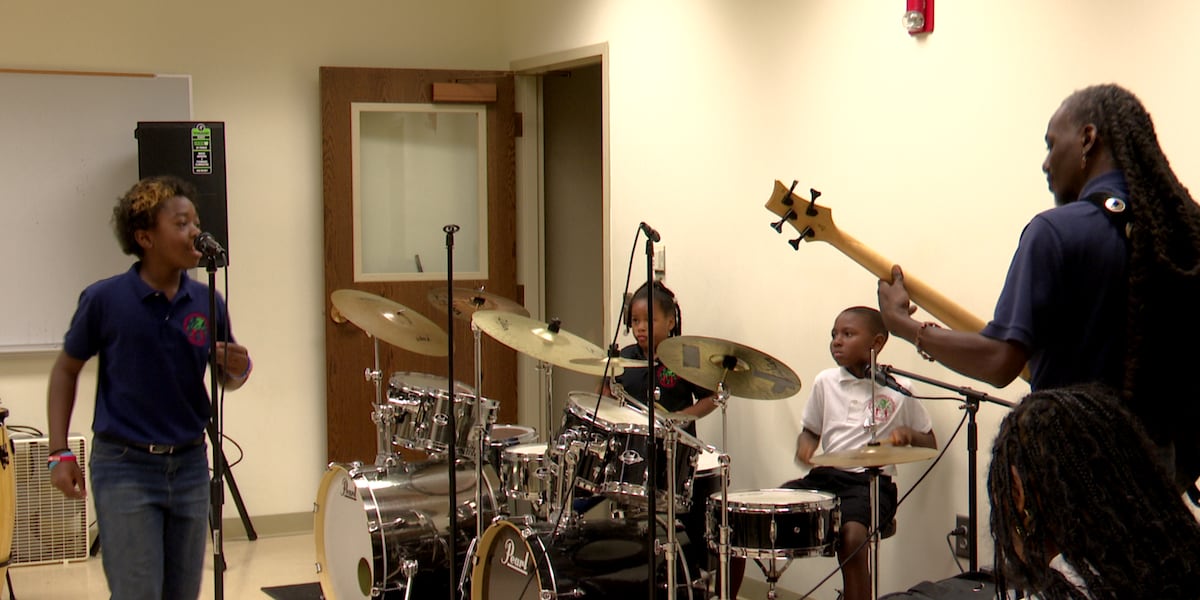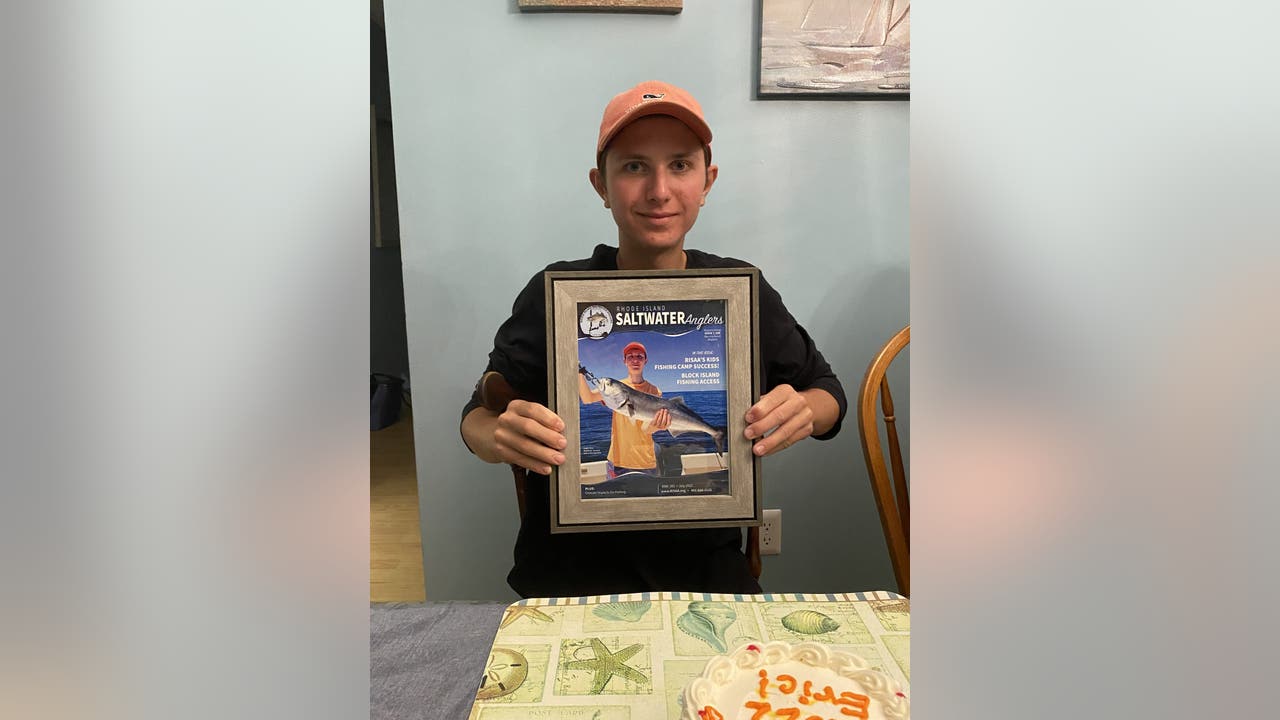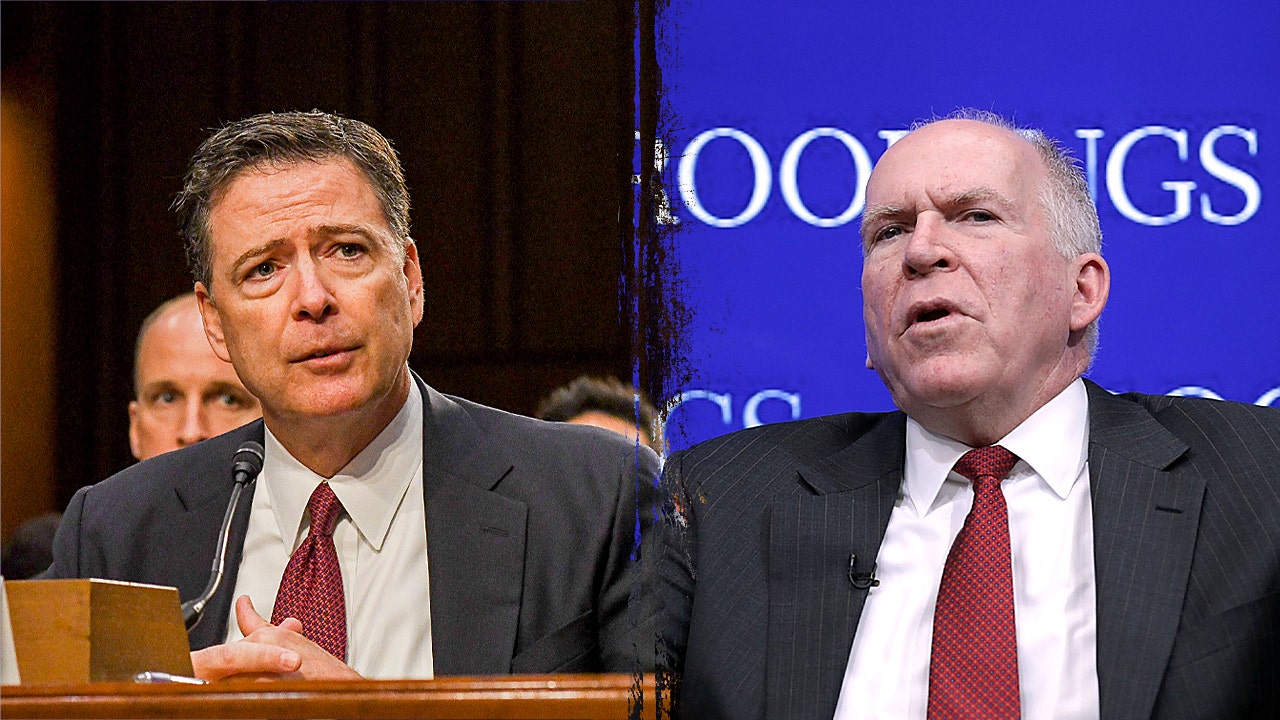World
Time is running out to stop Iran from making nuclear bomb: 'Dangerous territory'

President Donald Trump on Monday said the situation with Iran is entering “dangerous territory” as he announced his administration would be talking to Iran on Saturday.
While it’s not yet known what the talks will achieve, experts continue to warn that time is running out to not only block Iran’s nuclear program but to utilize existing tools to counter Tehran’s dismissal of international law, a mechanism known as “snapback” sanctions.
“This is the one time that we have the ability to sort of put new sanctions on Iran where we don’t need Russia and China’s help, and we can just do it unilaterally,” Gabriel Noronha of the Jewish Institute for National Security of America told Fox News Digital. Noronha is an Iran expert and former special advisor for the Iran Action Group at the State Department.
The ability to employ snapback sanctions on Iran expires Oct. 18, 2025, which coincides with when Russia will lead the United Nations Security Council (UNSC) presidency for its rotational one-month stint.
The United Nations Security Council (Reuters/Stephani Spindel/File)
TRUMP, NETANYAHU TO MEET AT WHITE HOUSE AS ISRAEL SEEKS TARIFF RELIEF, DISCUSSIONS ON IRAN, GAZA HOSTAGES
The provision for snapback sanctions was enacted under UNSC Resolution 2231, which was agreed to just days after the Joint Comprehensive Plan of Action (JCPOA) was signed in 2015 as a way to ensure that if Iran was found to be violating the nuclear deal, stiff international sanctions could once again be reimposed.
The JCPOA has increasingly been considered a collapsed agreement after the U.S. withdrew in 2018 under the first Trump administration, followed by increasingly flagrant violations by Iran of the nuclear deal.
This has culminated in the rapid expansion of Tehran’s nuclear program and the assessment by the U.N. nuclear watchdog earlier this year that Tehran had amassed enough near-weapons-grade uranium to develop five nuclear weapons if it were to be further enriched.
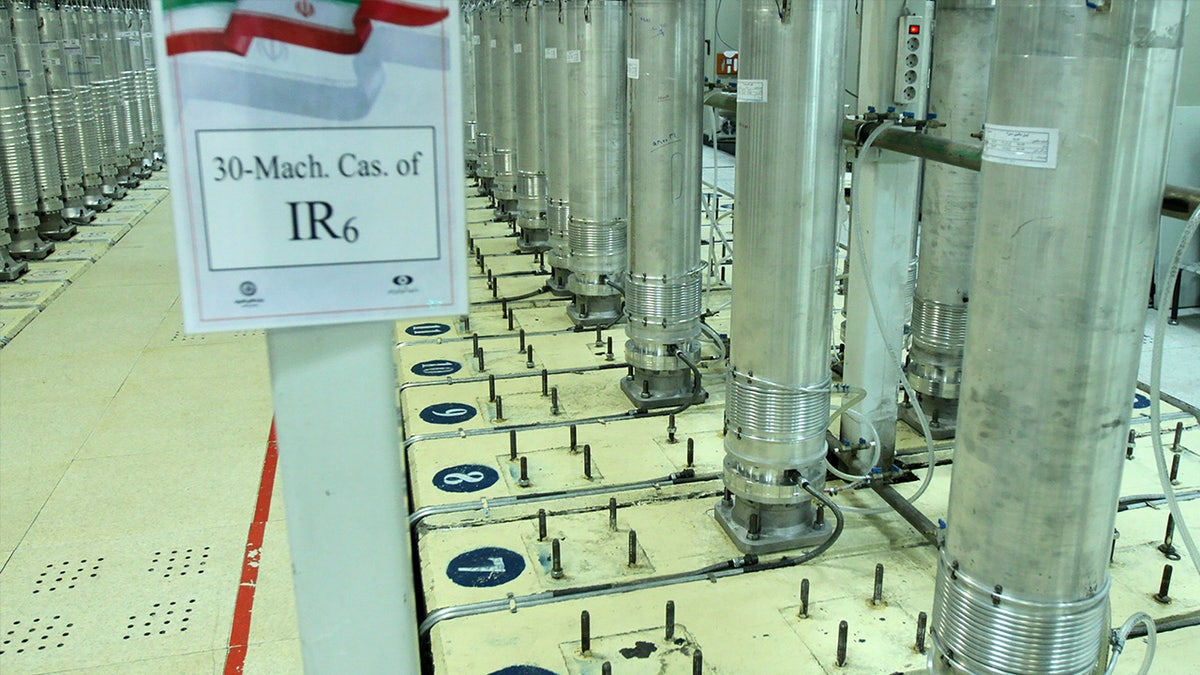
Centrifuge machines are shown in the Natanz uranium enrichment facility in central Iran in 2019. (Atomic Energy Organization of Iran via AP)
European nations for years have refused to enact snapback sanctions in a move to try and encourage Tehran to come back to the negotiating table and diplomatically find a solution to end its nuclear program.
Any participant in the JCPOA can unilaterally call up snapback sanctions if Iran is found to have violated the terms of the agreement. But the U.S., which has been calling for snapbacks since 2018, was found by the U.N. and all JCPOA members to no longer be legally eligible to utilize the sanction mechanism after its withdrawal from the international agreement.
But as Iran continues to develop its nuclear program, the tone among European leaders has also become increasingly frustrated.
France’s foreign minister last week suggested that if Iran did not agree to a nuclear deal and halt its program, then military intervention appeared “almost inevitable.”

The Foundation for Defense of Democracies has analyzed where Iran’s nuclear infrastructure is located. (Foundation for Defense of Democracies)
EXPERTS WARN IRAN’S NUCLEAR DOUBLE-TALK DESIGNED TO BUY TIME, UNDERMINE US PRESSURE
“Iran must never acquire nuclear weapons,” Foreign Minister Jean-Noel Barrot reportedly told France’s Parliament on Wednesday.
“Our priority is to reach an agreement that verifiably and durably constrains the Iranian nuclear program,” he added.
It remains unclear how much longer European nations will attempt to hold out for discussions with Iran, as Trump has said he is becoming fed up with Tehran and has threatened direct military confrontation, even while he has made clear his administration’s willingness to discuss a deal with Tehran.
With France serving as UNSC president in April and the bureaucratic red tape Russia could employ, UNSC members supportive of blocking Iran’s nuclear program must immediately call up snapback sanctions, Noronha said.
“It takes about six weeks to actually be implemented properly,” said Noronha, author of “Iran Sanctions, U.N. Security Council Resolution 2231, and the Path to Snapback,” which was released last week. “And second, because the distribution of the presidencies and leadership of the U.N. Security Council is weighted towards more favorable leaders right now in the spring before it goes to pretty adversarial leadership in the summer and fall.”
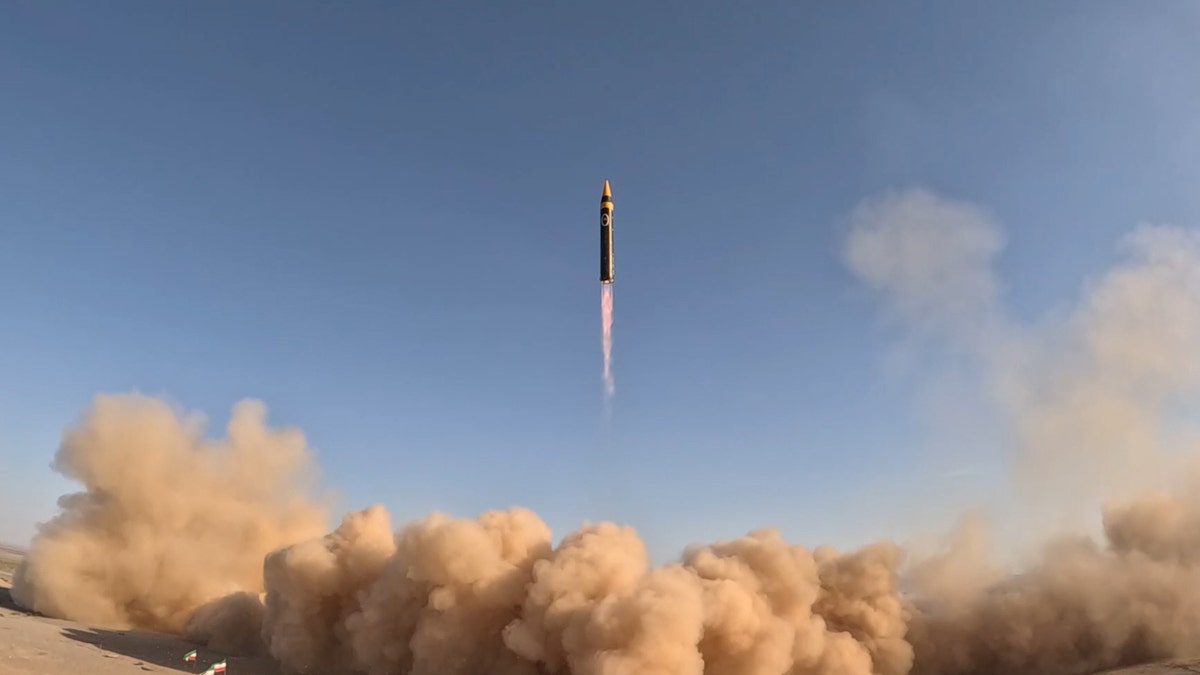
An Iranian medium-range ballistic missile called Hayber (Hurremshahr-4) is seen after launch in Tehran on May 7, 2023. (Iranian Defense Ministry/Hanodut/Anadolu Agency via Getty Images)
The expert said this is a rare moment for the UNSC, which in recent years has become increasingly ineffective in accomplishing major geopolitical wins because it is generally divided between the U.S., U.K. and France on one side and Russia and China on the other.
A single veto is enough to block a resolution being enacted, and progress in the council has become stagnant following Russia’s invasion of Ukraine.
But even if Russia objects to reimposing sanctions on Iran, as Tehran has become a close ally of Moscow’s, it actually has very few options for blocking the snapback mechanism that it previously agreed to, so long as at least one other nation actually calls for the sanction tool.
“This is the only time this has ever happened at the U.N. before,” Noronha said. “They basically said, when we invoke snapback, what it does is it says U.N. sanctions will automatically return unless there’s a vote by the council to unanimously allow sanctions relief to remain on the books.”
The snapback mechanism would legally enforce all 15 UNSC member nations to reimpose sanctions on Iran, including Russia and any nation that may be sympathetic to Tehran.
If the snapback mechanism expires come October, the U.N.’s hands will likely be tied when it comes to countering Iran’s nuclear program, as it is unlikely any new resolutions on the issue will be able to pass through the council given the current geopolitical climate between the West and Russia.

World
Amanda Anisimova upsets No. 1 Aryna Sabalenka at Wimbledon and faces Iga Swiatek in the final
LONDON (AP) — A little more than two years ago, Amanda Anisimova took a break from tennis because of burnout. A year ago, working her way back into the game, the American lost when she had to go through qualifying for Wimbledon because her ranking of 189th was too low to get into the main bracket automatically.
Look at Anisimova now: She’s a Grand Slam finalist for the first time after upsetting No. 1-ranked Aryna Sabalenka 6-4, 4-6, 6-4 in a compelling contest at a steamy Centre Court on Thursday.
In Saturday’s final, Anisimova will face Iga Swiatek, who is a five-time major champion but advanced to her first title match at the All England Club with a 6-2, 6-0 victory over Belinda Bencic.
Swiatek was dominant throughout, never letting Bencic get into their far-less-intriguing semifinal and wrapping things up in 71 minutes with serves at up to 119 mph and twice as many winners, 26, as unforced errors, 13.
So it turns out she can do just fine on grass courts, thank you very much.
“Tennis keeps surprising me. I thought I lived through everything, even though I’m young. I thought I experienced everything on the court. But I didn’t experience playing well on grass,” Swiatek said. “That’s the first time.”
She’s 5-0 in major finals — 4-0 on the French Open’s clay, 1-0 on the U.S. Open’s hard courts — but only once had been as far as the quarterfinals at Wimbledon until now. It’s been more than a year since Swiatek won a title anywhere, part of why the 24-year-old from Poland relinquished the top ranking to Sabalenka in October and is seeded No. 8 this fortnight.
From an AI chatbot and real-time win predictions, at one of tennis’s biggest global stages, Wimbledon is testing new ways to bring fans closer to the action. As the world tunes in, artificial intelligence is changing how the game is followed off court by millions. (AP Video by Mustakim Hasnath)
Saturday’s winner will be the eighth consecutive first-time Wimbledon women’s champion.
The 13th-seeded Anisimova, who was born in New Jersey and grew up in Florida, was playing in her second major semifinal after losing at that stage at the 2019 French Open at age 17.
“This doesn’t feel real right now,” Anisimova said after ending the 2-hour, 36-minute contest with a forehand winner on her fourth match point. “I was absolutely dying out there. I don’t know how I pulled it out.”
In May 2023, Anisimova took time off, saying she had been “ struggling with my mental health ” for nearly a year.
Now 23, she is playing as well as ever, her crisp groundstrokes, particularly on the backhand side, as strong and smooth as anyone’s. She is guaranteed to break into the top 10 of the WTA rankings for the first time next week, no matter what happens in the title match.
“If you told me I would be in the final of Wimbledon, I would not believe you,” Anisimova said with a laugh. “At least not this soon, because it’s been a year turnaround since coming back and to be in this spot, it’s not easy. … To be in the final is just indescribable, honestly.”
For Sabalenka, 0-3 in semifinals at the All England Club, this defeat prevented her from becoming the first woman to reach four consecutive Grand Slam finals since Serena Williams won four major trophies in a row a decade ago.
Sabalenka missed Wimbledon last year because of an injured shoulder, then won the U.S. Open in September for her third Slam title.
She was the runner-up to Madison Keys at the Australian Open, and to Coco Gauff at the French Open, where Sabalenka’s post-match comments drew criticism and led her to apologize both privately to Gauff and publicly. Sabalenka and Gauff smoothed things over before the start of play at the All England Club, dancing together and posting videos on social media.
On Thursday, Sabalenka began her news conference with as simple a statement as can be, “She was the better player,” then laughed.
“Losing sucks, you know?” she added in response to the first question from a reporter. “You always feel like … you don’t want to exist anymore.”
Anisimova improved to 6-3 against Sabalenka, a 27-year-old from Belarus, and two of the hardest hitters in the game traded booming shots and loud shouts.
They smacked big serves: Sabalenka reached 120 mph, Anisimova 112 mph. They ended points quickly with first-strike aggressiveness.
The average exchange was over after just three shots. By the end, 167 of the 214 total points lasted fewer than five strokes, and just seven contained nine or more.
Probably a good thing, too, given the heat.
The temperature hit 88 degrees Fahrenheit (31 degrees Celsius) in the first set, which was delayed twice because spectators in the lower level — with no shade — felt unwell.
One key to the outcome: Anisimova saved 11 of the 14 break points she faced.
There was a particularly lengthy shout by Sabalenka in the second set, shortly after she was angered when Anisimova made some noise during another back-and-forth. When the game ended, with Sabalenka making the score 3-all, she let out another scream.
Sabalenka, who double-faulted to end the opening set, pulled even by closing the second set with a 114 mph service winner. She she broke to begin the third.
Could have been daunting for Anisimova. Instead, she didn’t waver, coming back to lead 5-2. Only then did some tension arrive anew, as Anisimova wasted her first match point, and Sabalenka broke for 5-4.
Anisimova stayed right there and, with another break, she had won, then covered her mouth with her right hand.
___
AP tennis: https://apnews.com/hub/tennis
World
Top Ukrainian spy gunned down in Kyiv ambush attack: report
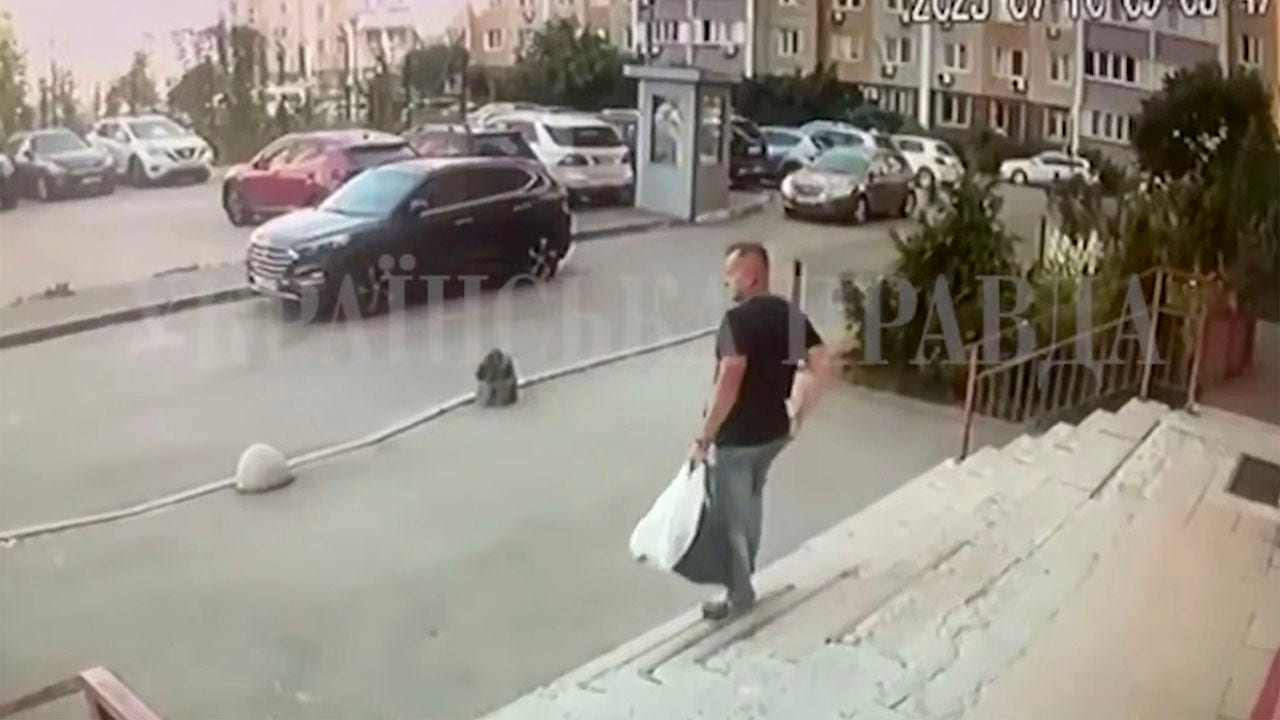
NEWYou can now listen to Fox News articles!
A top Ukrainian spy was gunned down in Kyiv in broad daylight Thursday in an attack being blamed on Russia, reports said.
Sources told Ukrainska Pravda that an unknown individual approached Col. Ivan Voronych of the Security Service of Ukraine around 9 a.m. local time and shot at him five times with a pistol before fleeing the scene. A video purportedly showing the ambush depicted a man being attacked while walking to a vehicle outside an apartment building.
“A criminal investigation has been opened into the murder of an SSU employee in Kyiv’s Holosiivskyi district,” a spokesperson for the Ukrainian agency told the outlet. “The Security Service and the National Police are taking comprehensive measures to establish all the circumstances of the crime and bring those responsible to justice.”
Voronych suffered multiple gunshot wounds and was pronounced dead at the scene, according to Ukrainska Pravda. The colonel led a division within Ukraine’s security service that focused on high-level special operations and counter-terrorism, The Telegraph reported.
TRUMP CAUTIONED PUTIN HE WOULD ‘BOMB THE S—’ OUT OF MOSCOW IF RUSSIA INVADED UKRAINE, NEW BOOK CLAIMS
A man identified by Ukrainska Pravda as Ukraine Col. Ivan Voronych is seen walking out of an apartment building in Kyiv on Thursday, July 10, just moments before the shooting. (East2West)
“With five shots at close range while leaving the apartment today… the enemy killer did his dirty work,” former Ukrainian intelligence officer Roman Chervinsky told The Telegraph.
Ihar Mosiychuk, a former Ukrainian parliament member, blamed Russian special services for orchestrating the hit, The Telegraph also reported.
UKRAINIAN US AMBASSADOR, SEEN WITH HEAD IN HANDS DURING OVAL OFFICE MEETING, IS DEPARTING DC
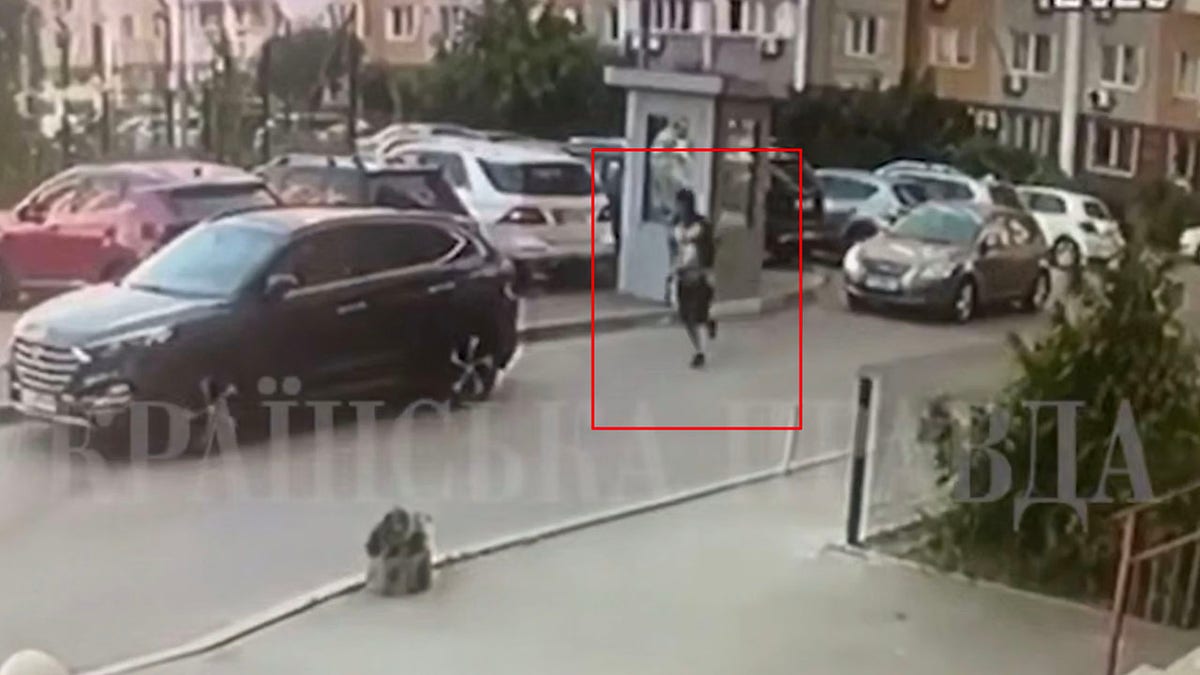
A suspect is seen running away from the area after the shooting on Thursday, July 10, in Kyiv, Ukraine. (East2West)
“Police officers are establishing the circumstances of the shooting in the Holosiivskyi district of Kyiv,” the Kyiv Police wrote on Telegram. “Arriving on a call, law enforcement officers discovered the body of a man with a gunshot wound.”

Police investigate a shooting on Thursday, July 10, outside an apartment building in Kyiv Ukraine. Col. Ivan Voronych of the Security Service of Ukraine reportedly was killed in the attack. (East2West)
“The person involved in the crime is being identified, and measures are being taken to detain him,” police added.
World
Hoekstra warns Trump policy is a “major blow” to climate efforts
US retreat from climate commitments under the Trump administration will have “significant consequences” for the planet, EU Climate Commissioner Wopke Hoekstra told Euronews at The Europe Conversation. His comments came after the EU unveiled its roadmap to cut polluting emissions by 90% by 2040
-

 Business1 week ago
Business1 week agoSee How Trump’s Big Bill Could Affect Your Taxes, Health Care and Other Finances
-

 Culture1 week ago
Culture1 week ago16 Mayors on What It’s Like to Run a U.S. City Now Under Trump
-

 Science1 week ago
Science1 week agoFederal contractors improperly dumped wildfire-related asbestos waste at L.A. area landfills
-

 Politics6 days ago
Politics6 days agoVideo: Trump Signs the ‘One Big Beautiful Bill’ Into Law
-

 News1 week ago
News1 week agoVideo: Who Loses in the Republican Policy Bill?
-

 Politics1 week ago
Politics1 week agoCongressman's last day in office revealed after vote on Trump's 'Big, Beautiful Bill'
-

 Technology1 week ago
Technology1 week agoMeet Soham Parekh, the engineer burning through tech by working at three to four startups simultaneously
-

 World6 days ago
World6 days agoRussia-Ukraine war: List of key events, day 1,227
